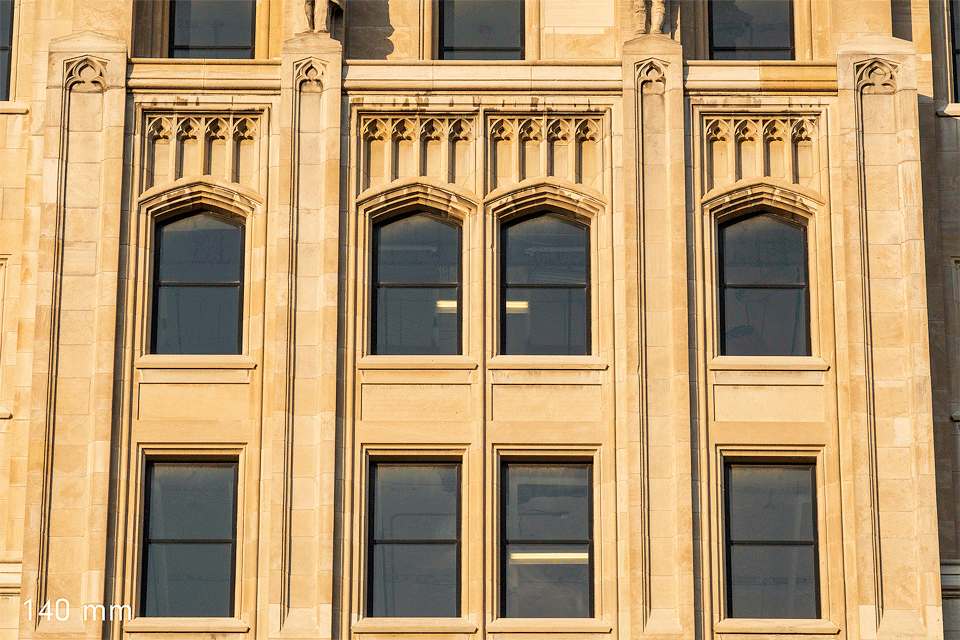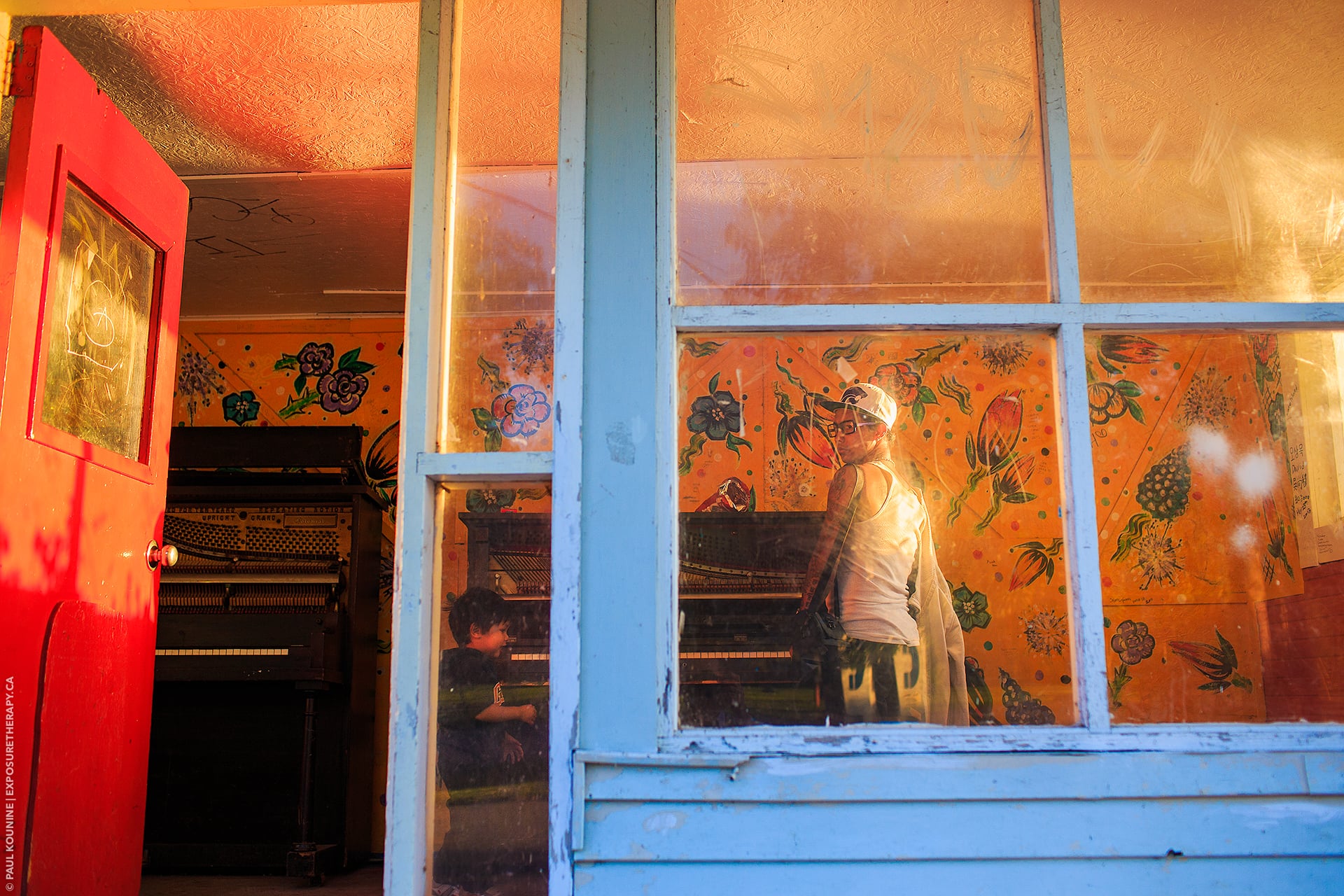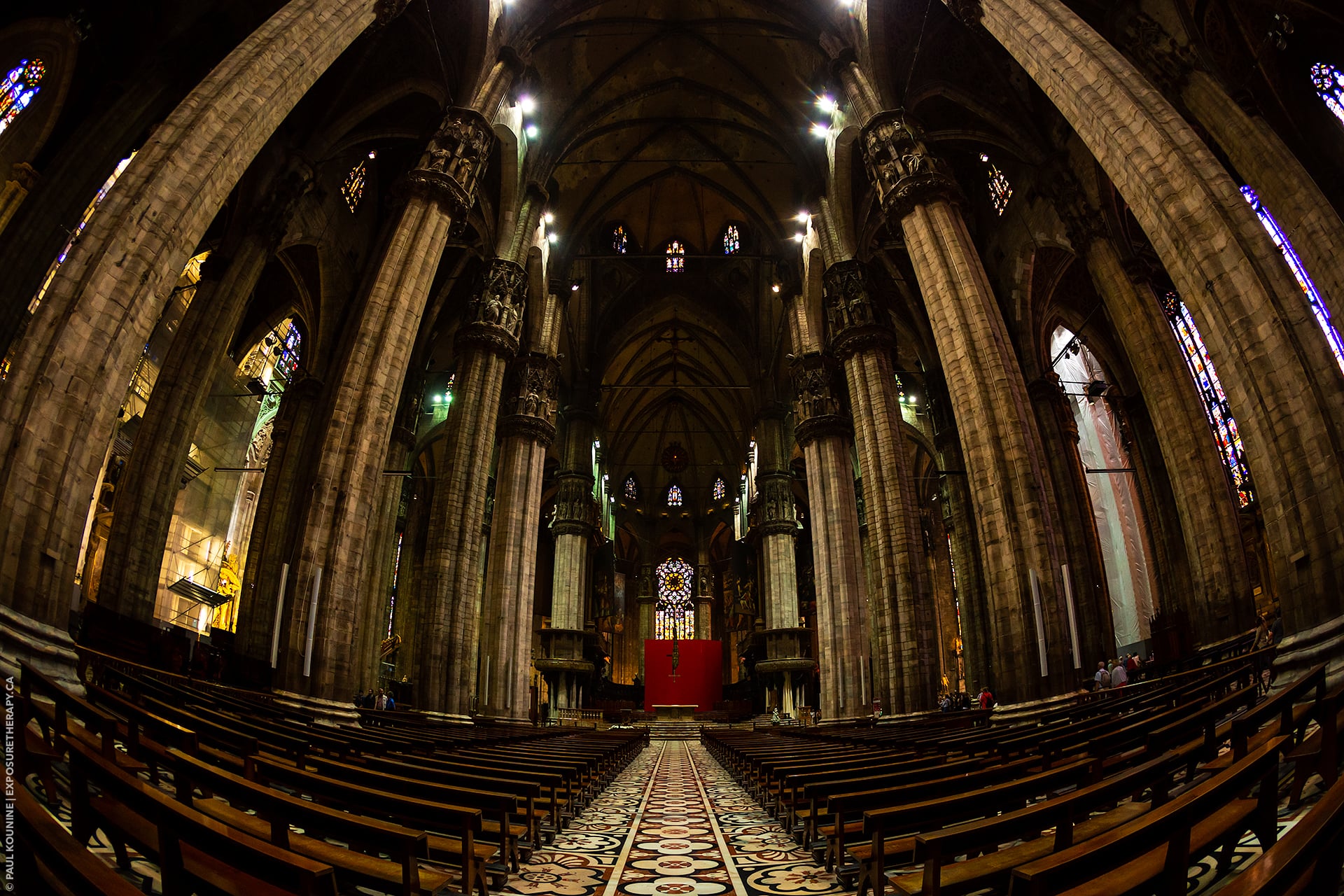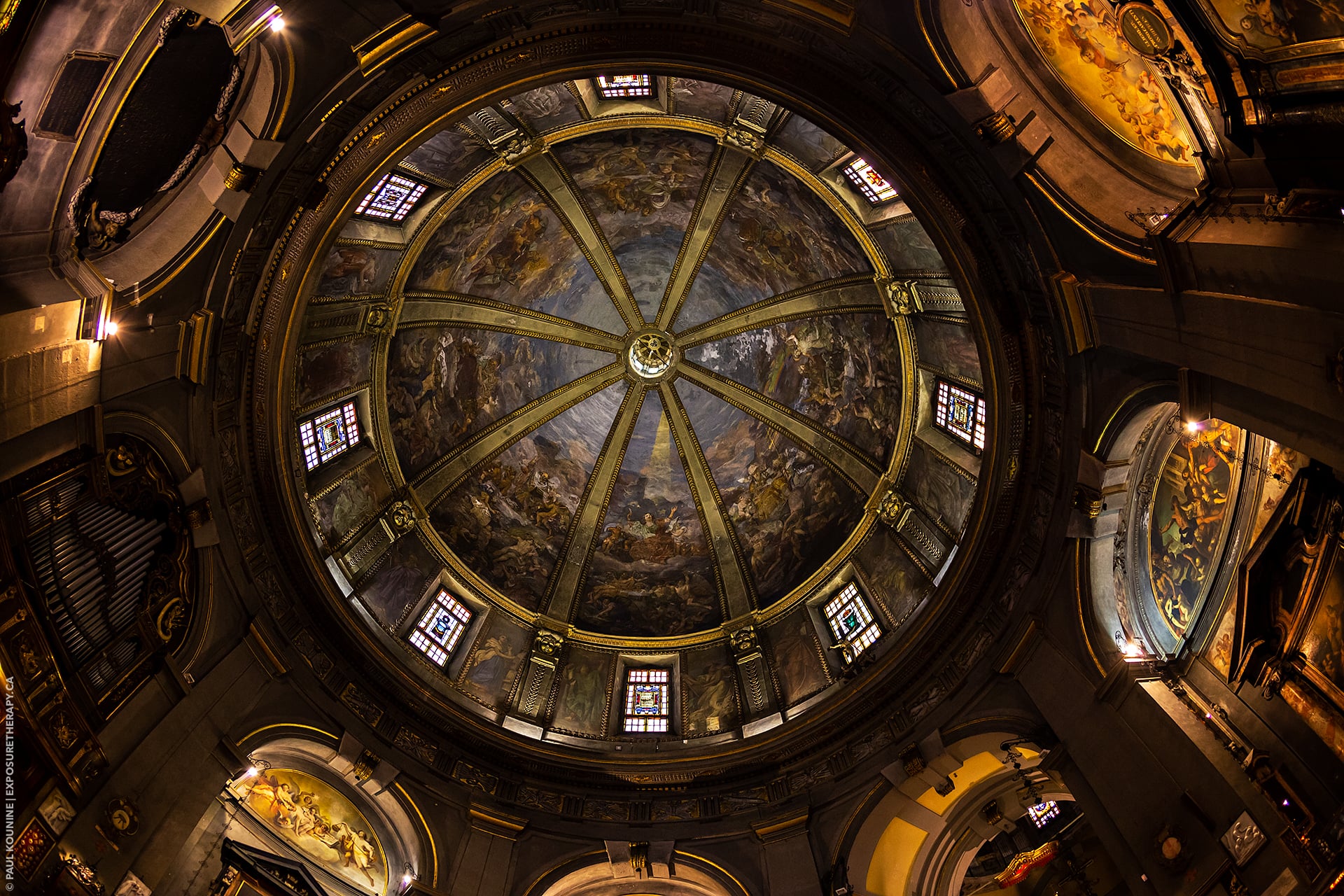Lens Focal Length
Focal Length
In photography, the most essential characteristic of a lens is its focal length, which is a measurement that describes how much of the scene in front of you can be captured by the camera. Technically, the focal length is the distance between the secondary principal point (commonly and incorrectly called the optical centre) and the rear focal point, where subjects at infinity come into focus. The focal length of a lens determines two interrelated characteristics: magnification and angle of view.

Focal length and magnification
The focal length of a lens determines its magnifying power, which is the apparent size of your subject as projected onto the focal plane where your image sensor resides. A longer focal length corresponds to greater magnifying power and a larger rendition of your subject, and vice versa.
Subject size is directly proportional to the focal length of the lens. For example, if you photograph a soccer player kicking a ball, then switch to a lens that is twice the focal length of the first, the rendered size of every element in your image, from the person to the ball, will be doubled in size along the linear dimensions.
It’s important to understand that the degree to which the focal length magnifies an object does not depend on your camera or the size of its image sensor. Assuming a fixed subject and subject distance, every lens of the same focal length will project an image of your subject at the same scale. For example, if a 35 mm lens casts a 1.2 cm image of a person, that image will remain 1.2 cm high regardless of your camera’s sensor format. However, on a Micro Four Thirds format camera, the image of that person will fill the height of the frame, whereas it will occupy half the height of a full-frame image sensor, and about one-third the height of a medium format image sensor. As you progress from a smaller sensor to a larger one, the 1.2 cm high projection of the person remains unchanged, but it occupies a smaller part of the total frame. Therefore, although the absolute size of the image will stay constant across varying image sensor formats, its size in proportion to each image sensor format will be different.
Focal length and angle of view
The angle of view describes the breadth, or how much, of a scene is captured by the lens and projected onto your camera’s image sensor. It’s expressed in degrees of arc and measured diagonally along the image sensor. Thus, the angle of view of any lens of a given focal length will change depending on the size of the camera’s image sensor. For example, a 50 mm lens has a wide angle of view on a medium format camera, a normal angle of view on a full-frame camera, a narrower angle of view on an APS‑C camera, and a narrow angle of view on a Micro Four-Thirds camera.
If you’re into math—and who isn’t?—the general formula for calculating the angle of view when you know the focal length and the sensor size is:
AOV = 2 × arctan (d/2ƒ)
Where:
- AOV = Angle of view (in degrees)
- d = Sensor dimension (diagonal, horizontal, or vertical depending on what angle of view you are calculating, in millimetres)
- ƒ = Focal length of the lens
- arctan = Inverse tangent function
The relationship between the angle of view and a lens’s focal length is roughly inversely proportional from 50mm and up on a full-frame camera. However, as the focal length grows increasingly shorter than 50mm, that rough proportionality breaks down, and the rate of change in the angle of view slows. For example, the change in angle of view from 100mm to 50mm is more pronounced than the change from 28mm to 14mm.

Normal focal length lenses
A “normal” lens is defined as one whose focal length is equal to the approximate diagonal length of a camera’s image sensor. In practice, such lenses tend to fall into a range of slightly longer focal lengths that are claimed to possess an angle of view comparable to that of the human eye’s cone of visual attention, which is about 55°.
For instance, on full-frame cameras, whose image sensors measure 36×24 mm, the diagonal length is approximately 43 mm, and yet, the 50 mm lens is conventionally considered normal. On APS‑C cameras (24 × 16 mm), whose diagonal spans about 28 mm, a 35 mm focal length is regarded as normal primarily because its angle of view is similar to the 50 mm lens on the full-frame format. Therefore, normal focal lengths will differ as a function of the camera’s image sensor size. In fact, as you continue reading, keep in mind that descriptive terms such as “ultra-wide,” “short,” “long,” et cetera, implicitly refer to the angle of view of a lens.
For any given camera system, normal lenses are generally the “fastest” available. Adjectives such as “fast” and “slow” always describe lens speed, which refers to a lens’ maximum aperture opening. For instance, a lens with a ƒ/2 or larger aperture is generally considered fast; a lens with a ƒ/5.6 or smaller aperture is deemed to be slow. How is speed relevant to aperture? Recall the reciprocity law: larger apertures permit more light into the camera, thereby allowing you to use faster shutter speeds, and vice versa.



Short focal length lenses
In general, a short focal length—or short focus, or “wide-angle”—lens is one whose angle of view is 65° or greater. Recall from above that angle of view is determined by both focal length and image sensor size, which means that what qualifies as “short” is predicated upon a camera’s image sensor format. Therefore, on full-frame cameras, the threshold for wide-angle lenses is 35 mm or less, and on APS‑C cameras, it’s 23 mm or less. Lenses with an angle of view of 85° or greater are called “ultra wide-angle,” which is about 24 mm or less on full-frame and 16mm or less on APS‑C cameras.
Wide-angle lenses represent the only practical method of capturing a scene whose essential elements would otherwise fall outside the angle of view of a normal lens. Conventional subjects of ultra wide-angle lenses include architecture (especially interiors), landscapes, seascapes, cityscapes, astrophotography, and the entire domain of underwater photography. Wide-angle lenses are often used for photojournalism, street photography, automotive, some sports, and niche portraiture.







There are two types of wide-angle lenses, rectilinear and fisheye (sometimes termed curvilinear). The vast majority of wide-angle lens—and other focal lengths, too—are rectilinear. These types of lenses are designed to render the straight elements found in a scene as straight lines on the projected image. Despite this, wide-angle rectilinear lenses cause rendered objects to progressively stretch and enlarge as they approach the edges of the frame. In photography, all fisheye lenses are ultra wide-angle lenses that produce images featuring strong convex curvature. Fisheye lenses render the straight elements of a scene with a strong curvature about the centre of the frame (the lens axis). The effect is similar to looking through a door’s peephole, or the convex safety mirrors commonly placed at the blind corners of indoor parking lots and hospital corridors. Only straight lines that intersect with the lens axis will be rendered as straight in images captured by fisheye lenses.



Long-focus lenses
Lenses with an angle of view of 35° or narrower are considered long-focus lenses. This translates to a focal length of about 70 mm and greater on full-frame cameras, and about 45 mm and longer on APS‑C cameras. It’s common for photographers to (incorrectly) refer to long-focus lenses as “telephoto” lenses. A true telephoto lens is one whose indicated focal length is longer than the physical length of its body. Due to this ubiquitous misuse of the word, there exists a further classification of long-focus lenses whose angle of view is 10° or narrower called “super telephoto” lenses (equal to or greater than 250 mm on full-frame cameras and 165 mm on APS‑C cameras). Fortunately, super telephoto lenses are more often than not actual telephoto designs. A great example is the Canon EF 800 mm f/5.6L IS USM Lens, which is only 461 mm long.
Due to their ability to magnify distance objects, long-focus lenses present photographers with many uses. They are almost universally lauded for portraiture because their narrow angle of view allows for a higher magnification of the subject from conventionally more pleasing perspectives. As a rule of thumb, a desirable focal length for a portrait lens starts at twice the normal focal length for the camera system (about 85 mm for full-frame and 56 mm for APS‑C).
Beyond portraiture, long-focus lenses are useful for isolating subjects in busy and crowded environments. Photojournalists, wedding, and sports photographers exploit this ability regularly. Due to their magnifying power, super telephoto lenses are a mainstay for wildlife and nature photographers. Lastly, long-focus lenses are frequently used by landscape photographers to capture distant vistas or to isolate a feature from its surroundings.






Zoom lenses
A zoom lens allows photographers to vary its effective focal length through a specified range, which alters the angle of view and magnification of the image. Zoom lenses are described by stating their focal length range from the shortest to longest, such as 24–70 mm and 70–200 mm. The focal length range of a zoom lens directly correlates to its zoom ratio, which is derived by dividing the longest focal length by the shortest. Both of the lenses above have a zoom ratio of approximately 2.9x, or 2.9:1. The zoom ratio also describes the amount of subject magnification a single lens can achieve across its available focal length range.
As you have learned in the section on apertures and f‑numbers, “an increase in focal length decreases the intensity of light reaching the image sensor.” This relationship is most obvious in zoom lenses. A “variable” aperture zoom lens is a lens whose maximum aperture becomes smaller with increased focal length. These types of zoom lenses are simple to spot because they list a maximum aperture range instead of a single number. The range specifies the maximum aperture for the shortest and longest focal lengths of the zoom range. Variable aperture lenses are the most common type of zoom lens. A constant aperture or “fixed” aperture zoom lens is one whose maximum aperture remains constant across the entire zoom range. Fixed aperture lenses are typically more massive and more expensive than their variable aperture counterparts. They are also more straightforward to work with when practicing manual exposure at the maximum aperture since no compensation for lost light is required during zooming.
A true zoom lens, known as a parfocal lens, maintains a set focus distance across its entire focal length range. In the days before digital photography—before electronic autofocus, even—it was common practice to focus a zoom lens at its longest focal length before taking the picture at the desired (if different) focal length. This technique is no longer possible because contemporary variable focal length lenses designed for photography are almost exclusively varifocal lenses, which do not maintain set focus across their zoom range. In practice, most photographers do not know the difference because the autofocus algorithms in their cameras compensate for the slight variations.
Prime lenses
A prime or fixed focal length lens has a set focal length that cannot be changed. There are several critical differences between prime and zoom lenses that you should know. Prime lenses are generally smaller, faster, and have better optical characteristics than zoom lenses. Despite this, photographers frequently opt to shoot with zoom lenses because of their convenience: a single lens can replace several of the most popular focal length prime lenses. This is especially important when you’d prefer to pack light, such as during a trip or a hike.
It’s important to recognize that the convenience and flexibility of zoom lenses can inspire lazy photography. The ease of changing the angle of view encourages photographers to settle on compositions that are good-enough, instead of seeking out better perspectives and gaining a deeper understanding of their subjects. Whatever lens you have, be it zoom or prime, it’s vital for the development of good photography to consider your subject from several perspectives by walking towards, stepping away, and circling around them.
The constant angle of view of a prime lens forces this type of experimentation—“zooming with your feet”—because the other options are either bad pictures or no pictures. Furthermore, restricting yourself to a single focal length for an extended period of time acquaints you to its angle of view and allows you to visualize a composition before raising the camera to your face.
Macro lenses
In photography, the term macro refers to extreme close-ups. Macro lenses are normal to long-focus lenses capable of focusing on extremely close subjects, thereby rendering large reproductions. The magnification ratio or magnification factor is the size of the subject projected onto the image sensor in comparison to its actual size. A macro lens’ magnification ratio is calculated at its closest focusing distance. A true macro lens is capable of achieving a magnification ratio of 1:1 or higher. Lenses with magnification ratios from 2:1 to 10:1 are called super macro. Ratios over 10:1 cross over into the field of microscopy. When shopping for a macro lens, keep in mind that in the context of kit lenses and point-and-shoot cameras, some manufacturers use the macro moniker as marketing shorthand for “close-up photography.” These products do not achieve 1:1 magnification ratios. When in doubt, check the technical specifications.
